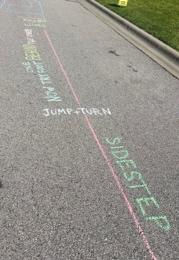Yoga for Children
- Sarah Chapuseaux, OTS
- Feb 22, 2017
- 2 min read

For thousands of years, yoga has been promoted as a tool to improve emotional, mental, physical, and spiritual wellness. With hundreds of poses and structured routines, it has appeal for both the beginner and the expert. Why so popular? Yoga combines physical exercise, meditation, and breathing techniques into a satisfactory challenge. Research shows that adults who do yoga on a regular benefit can improve muscle and bone strength, range of motion and flexibility, joint stability, motor coordination, and can even reduce high blood pressure and stress (McCall, 2007).
The great part about yoga is that it is never too young to start! In fact, there are many yoga plans designed specifically for children (hint: check Pinterest). The structured routine, soft music, and focused breathing are a great way to help calm children who may be having difficulties regulating their emotions or behaviors. These techniques can even be implemented throughout the day. If a child begins to feel overwhelmed or upset, they can take 10 seconds to close their eyes, practice their breathing, and center themselves. Positive use of this technique can also improve a child’s self-confidence and participation in social and academic situations.
Yoga can also be a great tool when used as part of a physical or occupational therapeutic routine for children working to improve musculoskeletal wellness. Many children in the therapy clinic exhibit high or low muscle tone, low muscle strength, and/or overly tight or overly mobile joints. Many also have difficulties with balance, body awareness, reaching, being able to cross the body’s midline, and bilateral coordination, or the use of both limbs or hands together. Yoga poses incorporate controlled stretching, weight bearing, and weight shifting through purposeful movements, all of which help improve the brain and body’s capabilities.
As with many activities, yoga is easily adapted to meet a specific person’s capabilities and needs. If a standard pose is too difficult to achieve, make it easier. For example, children can begin by balancing on three limbs instead of two. Starting off with moves that are too aggressive or complex can create a negative attitude towards yoga. See the following website for several great positions for children: http://www.kidsyogastories.com/kids-yoga-poses/. Another trick is to pose in different animal shapes-the creativity and fun is endless!
While yoga can be a great part of a therapeutic routine, it may not be for everyone. Please consult a physician before participating in any type of yoga activity if your child is medically fragile or has any kind of bone or blood disorder. Also, make sure to always practice on a soft surface.
References
A List of 58 Yoga Poses for Kids. (2017). Retrieved from
http://www.kidsyogastories.com/kids-yoga-poses/
McCall, T. (2007) 38 Health Benefits of Yoga. Yoga Journal. Retrieved from
http://www.yogajournal.com/article/health/count-yoga-38-ways-yoga-keeps-fit/
Thorton, S. (2017). How Yoga Can Benefit Children with Cerebral Palsy. Yoga Today. Retrieved
from https://yogainternational.com/article/view/how-yoga-can-benefit-children-with-cerebralpalsy?utm_content=buffere34a3&utm_medium=social&utm_source=facebook.com&utm_campaign=articles




Yoga offers incredible benefits for kids, promoting not just physical health but also emotional balance and mental clarity. Starting healthy habits early can make a big difference in life. For anyone facing challenges with substance use or needing support, finding help at a trusted rehab centre can be a crucial step toward healing and building a stronger future.